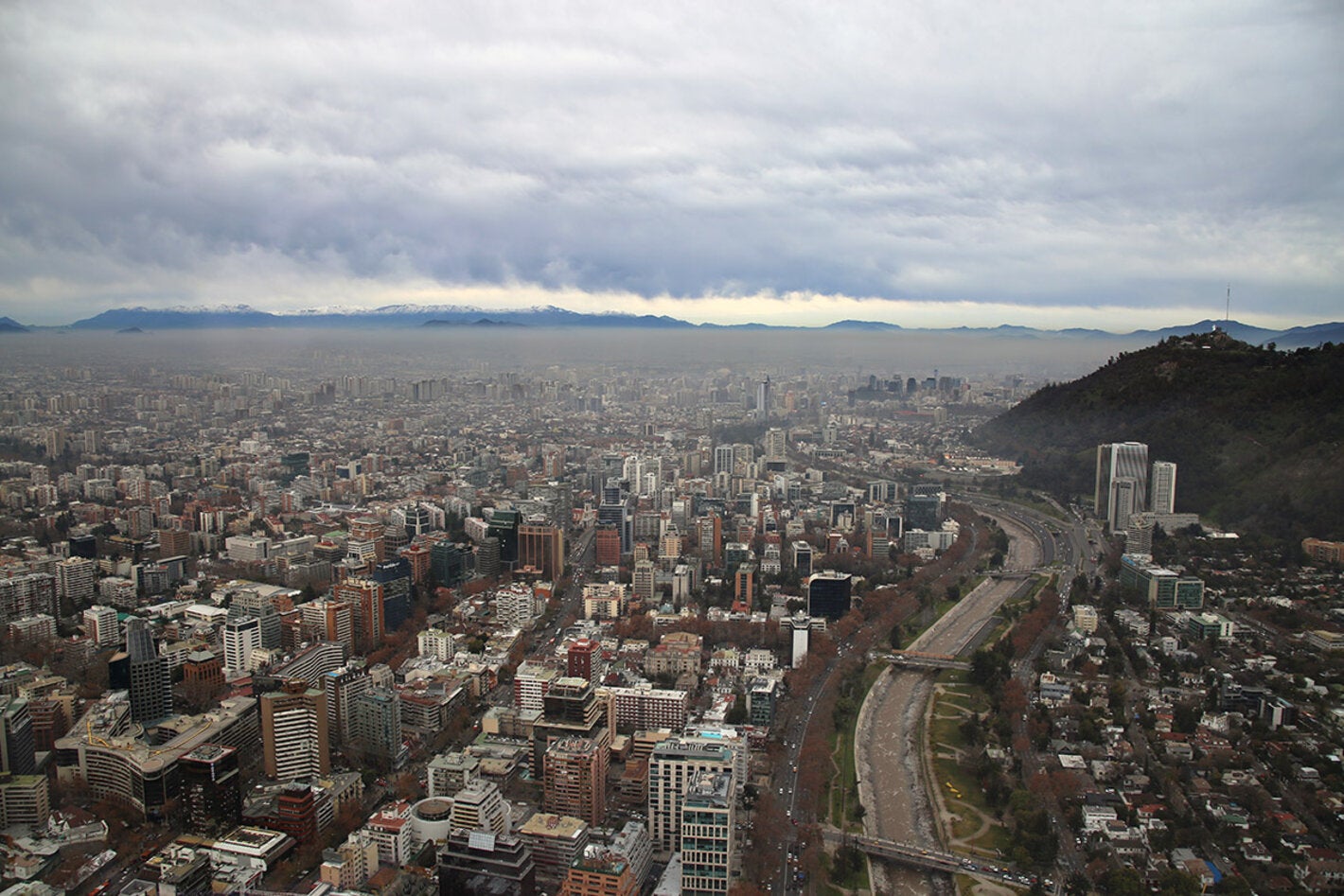
12 May 2016 | GENEVA — More than 80% of people living in urban areas that monitor air pollution are exposed to air quality levels that exceed the World Health Organization (WHO) limits. While all regions of the world are affected, populations in low-income cities are the most impacted.
According to the latest urban air quality database, 98% of cities in low- and middle-income countries with more than 100 000 inhabitants do not meet WHO air quality guidelines. However, in high-income countries, that percentage decreases to 56%.
In the past two years, the database — now covering 3000 cities in 103 countries — has nearly doubled, with more cities measuring air pollution levels and recognizing the associated health impacts.
As urban air quality declines, the risk of stroke, heart disease, lung cancer, and chronic and acute respiratory diseases, including asthma, increases for the people who live in them.
"Air pollution is a major cause of disease and death. It is good news that more cities are stepping up to monitor air quality, so when they take actions to improve it they have a benchmark," says Dr. Flavia Bustreo, WHO Assistant-Director General, Family, Women and Children's Health. "When dirty air blankets our cities the most vulnerable urban populations—the youngest, oldest and poorest—are the most impacted."
Global urban air pollution trends
WHO was able to compare a total of 795 cities in 67 countries for levels of small and fine particulate matter (PM10 and PM2.5) during the five-year period, 2008-2013. PM10 and PM2.5 include pollutants such as sulfate, nitrates and black carbon, which penetrate deep into the lungs and into the cardiovascular system, posing the greatest risks to human health. Data was then analyzed to develop regional trends.
Key trends from 2008-2013:
- Global urban air pollution levels increased by 8%, despite improvements in some regions.
- In general, urban air pollution levels were lowest in high-income countries, with lower levels most prevalent in Europe, the Americas, and the Western Pacific Region.
- The highest urban air pollution levels were experienced in low-and middle-income countries in WHO's Eastern Mediterranean and South-East Asia Regions, with annual mean levels often exceeding 5-10 times WHO limits, followed by low-income cities in the Western Pacific Region.
- In the Eastern Mediterranean and South-East Asia Regions and low-income countries in the Western Pacific Region, levels of urban air pollution have increased by more than 5% in more than two-thirds of the cities.
- In the African Region, urban air pollution data remains very sparse, however available data revealed particulate matter (PM) levels above the median. The database now contains PM measurements for more than twice as many cities than previous versions.
Reducing the toll on human health
Ambient air pollution, made of high concentrations of small and fine particulate matter, is the greatest environmental risk to health—causing more than 3 million premature deaths worldwide every year.
"Urban air pollution continues to rise at an alarming rate, wreaking havoc on human health," says Dr. Maria Neira, WHO Director, Department of Public Health, Environmental and Social Determinants of Health. "At the same time, awareness is rising and more cities are monitoring their air quality. When air quality improves, global respiratory and cardiovascular-related illnesses decrease."
Most sources of urban outdoor air pollution are well beyond the control of individuals and demand action by cities, as well as national and international policymakers to promote cleaner transport, more efficient energy production and waste management.
More than half of the monitored cities in high-income countries and more than one-third in low- and middle-income countries reduced their air pollution levels by more than 5% in five years.
Reducing industrial smokestack emissions, increasing the use of renewable power sources, like solar and wind, and prioritizing rapid transit, walking and cycling networks in cities are among the suite of available and affordable strategies.
"It is crucial for city and national governments to make urban air quality a health and development priority," says WHO's Dr. Carlos Dora. "When air quality improves, health costs from air pollution-related diseases shrink, worker productivity expands and life expectancy grows. Reducing air pollution also brings an added climate bonus, which can become a part of countries' commitments to the climate treaty."
During the World Health Assembly, 24-30 May, Member States will discuss a road map for an enhanced global response to the adverse health effects of air pollution.
WHO's Air quality guidelines offer global guidance on thresholds and limits for key air pollutants that pose health risks. The Guidelines indicate that by reducing particulate matter (PM10) pollution from 70 to 20 micrograms per cubic meter (?g/m), air pollution-related deaths could be reduced by roughly 15%.
The WHO urban air quality database builds on well-established, public air quality monitoring systems as a source of reliable data in different parts of the world. National efforts to create operational and representative air quality monitoring systems should be strongly encouraged and supported.
***
Links
The database together with the summary of results, the methodology used for compiling the database, and WHO country groupings can be found at:
Public health, environmental and social determinants of health (PHE) and WHO Global Urban Ambient Air Pollution Database (update 2016)
Media contacts
Nada Osseiran, WHO Department of Public Health, Environmental and Social Determinants of Health. Tel: +41 22 791 4475, Mob: +41 79 445 1624, Email: osseirann@who.int
Kimberly Chriscaden, WHO Department of Communications. Tel : +41 22 791 2885, Mobile : +41 79 603 1891, Email : chriscadenk@who.int



